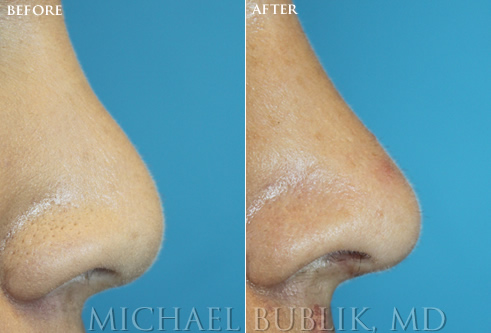

Several methods have been described for the measurement of nasal tip projection. In the present paper, it is defined as the distance of the nasal tip from the vertical facial plane as measured from the alar crease. There have been several definitions described for nasal tip projection.
#Pinocchio nose rhinoplasty skin
In addition, several minor tip-support mechanisms have been described, including the dorsal cartilaginous septum, the interdomal ligaments, the membranous septum, the nasal spine, the surrounding skin and soft tissues, and the alar side walls ( 2, 6) Generally, major tip support includes the size, shape and resiliency of medial and lateral crura the attachment of the medial crural footplates to the caudal septum and soft-tissue attachment of the caudal margin of the upper lateral cartilages to the cephalic margin of the lower lateral cartilages ( 2). The ‘tripod concept’ was then described, which relates the medial and lateral crura to projection and rotation of the nasal tip ( 4, 5).

Major tip-support mechanisms were first described by Janeke and Wright ( 3) and have been further studied. Nasal tip support has typically been classified as either major or minor. These include chin projection, upper lip height, nasolabial angle, dorsal height, nasofrontal angle and other physical characteristics ( 2). The perception of nasal tip projection is influenced by many factors other than nasal anatomy. The patient’s aesthetic goal must be carefully balanced with the maintenance of functional support because any procedure that reduces tip projection narrows the nasal valve and reduces air flow. It is cosmetically important for facial harmony but also functionally important for adequate air entry. Nasal tip projection is important for aesthetic and functional reasons. The goal of the nasal aesthetic surgeon is to use his or her judgment to try and achieve the patient’s goals and optimize the aesthetics of the nose.

Surgical correction of the nasal tip is the most difficult and the least predictable component of rhinoplasty surgery. The overprojected nasal tip, commonly referred to as the ‘Pinocchio’ nose, is a relatively uncommon but challenging deformity ( 1).


 0 kommentar(er)
0 kommentar(er)
